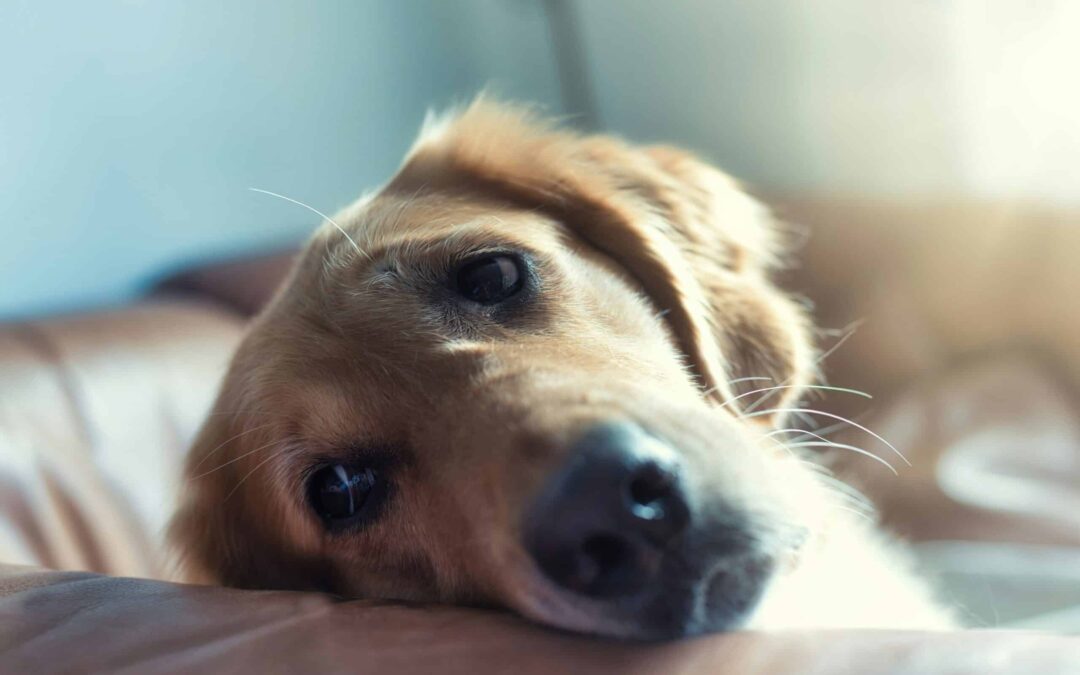It happens, just like it does with humans, and veterinarians aren’t really sure why or how. But very likely dogs with separation anxiety develop it in response to some trauma or a change in the household. And like with humans, it can strike any dog, though there are things that will help.
We might be seeing more dogs with separation anxiety for one reason that many share: the pandemic and work from home. In lots of households there was even school from home for some time. If you got a new dog during the pandemic (and so many Americans did; check out the stats here), then that dog adjusted to having a lot of socialization all day long.

If you headed back to school or work full time and quite suddenly, your dog’s routines were totally changed and literally overnight. If you were able to work part of the time at home and part in the office, perhaps this gave your dog time to adjust to more time without you.
Either way, dogs with separation anxiety will show definite signs.
Signs of separation anxiety
Separation anxiety will start even while you’re getting ready to leave. Dogs are acutely aware of you and they are observant of your patterns and routines. They know when you’re getting ready to leave the house. So you will likely start to notice signs before you go.
If you feel like your dog is showing signs at this stage, you might want to consider recording them while you’re gone to see if they settle down and relax or continue to be distressed.
Signs can include the following:
- Constant barking or howling. If you have neighbors close by, you might not need a recording to know this. You might have already been told.
- Destructive acts like chewing on furniture or destroying pillows and blankets (and shoes and anything that’s been left out). Signs of this will be obvious.
- Going to the bathroom in the house. (If your dog is older and starts to do this, you should make an appointment with your vet.)
- Excessive drooling or panting. This is one of those things you’ll need that recording for.
- Intense pacing.
- If you crate your dog, attempts to escape their crate.
- And loss of appetite if the separation anxiety has gotten bad enough to possibly create some depression.
How to deal with dogs with separation anxiety
Firstly, as always, you should make an appointment with your vet. They can help you to more clearly understand what’s happening for your dog, and they can provide options for treatment, depending on the severity of the issue.
There are medications that can be helpful, but if your dog is having milder separation anxiety, there are some things you can try yourself.
Have you had training for your dog?
A lot of those pandemic dogs never got training since we were all isolated from one another, so you might be interested in our training methods at Sundance Retrievers. We create training specific to your dog so feel free to contact us about how we can help with separation anxiety in particular.
In the meantime, you can try some of these tips to see if they help at all:
- try to not leave your dog alone for very long. If you can, build up their tolerance for your absence by leaving for a short time and then building that time in increments.
- look into doggie daycare if you have to be gone all day long.
- increase your dog’s daily exercise to use some of that nervous energy.
- find some non-food interactive toys that can provide engagement and distraction for when you are leaving. (You don’t want to give them a treat right before you leave or they’ll start to associate food with their anxiety.)
Like a lot with dogs, patience here is key. And if you are trying things on your own and it’s not helping, please bring in a professional.

